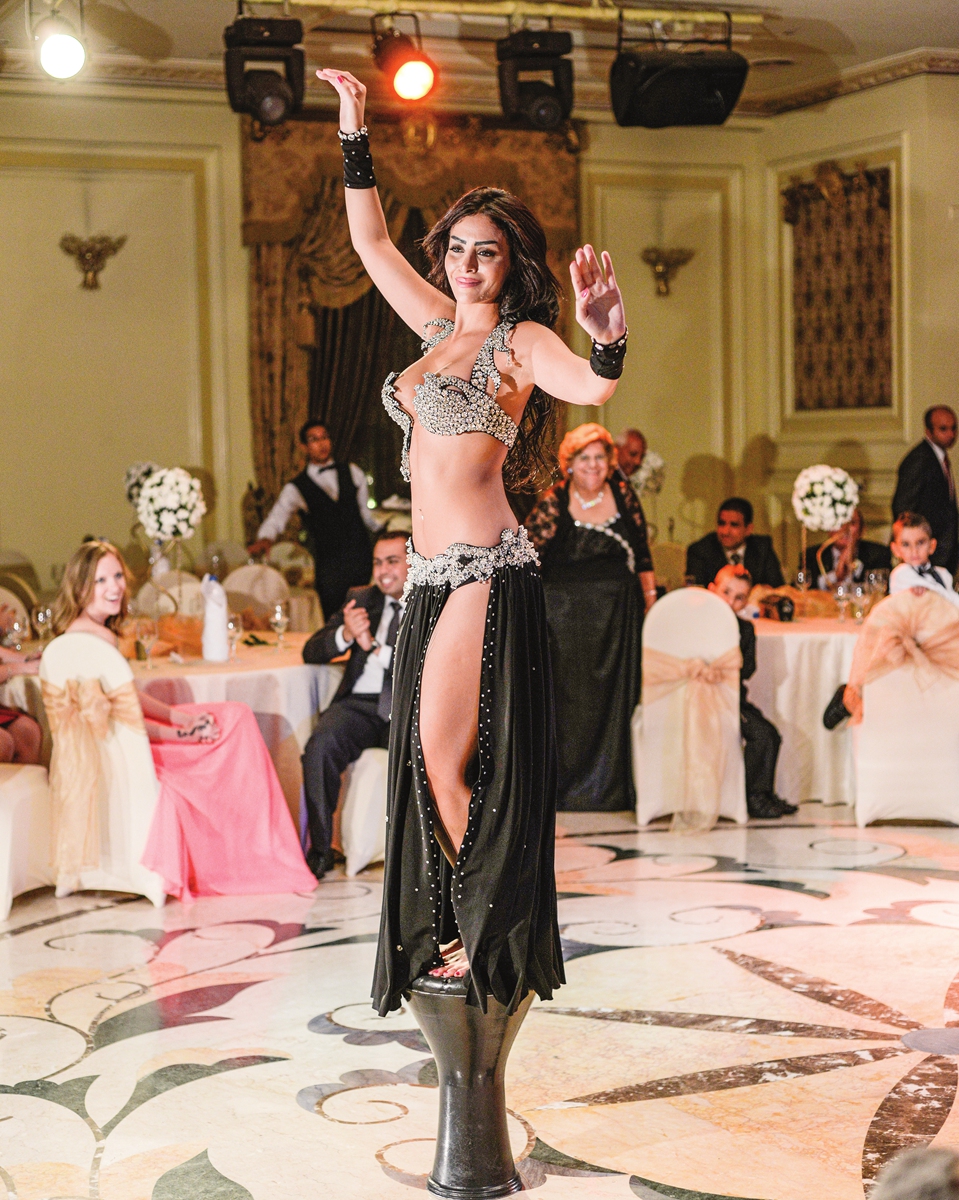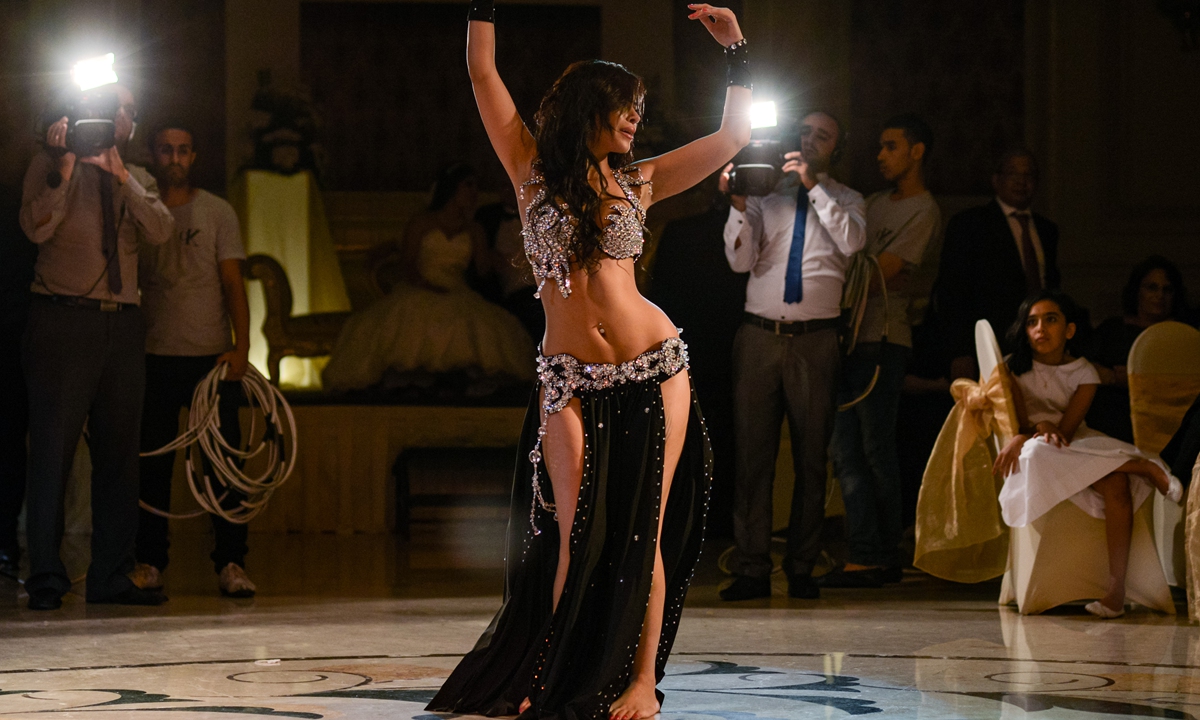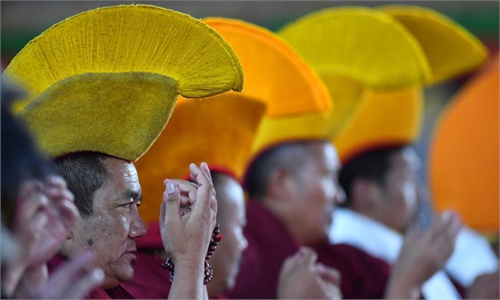ARTS / DANCE
Foreigners shake up local belly-dancing scene
Egypt's new dancers
At a Cairo wedding hall, Russian belly dancer Anastasia Biserova shimmied to the dance floor in a bright, high-slit skirt and an elaborately sequined bra.
She swirled her diaphanous pink shawl and glided through the hall as a band pumped out music, while the crowd broke into rapturous applause - all captured in a video posted online.
"There is no country around the world that appreciates belly-dancing like Egypt," she later told AFP. Biserova came to Cairo more than four years ago, building a solid name for herself.

"Here, there is a growing trend to invite foreign belly dancers to weddings, nightclubs and other events."
Long regarded as the birthplace of belly-dancing, the North African country has recently seen its community of homegrown dancers shrink, largely due to the profession's increasing notoriety as conservatism rises - and to a broadening crackdown on freedoms. The profession took a further hit as COVID-19 forced the temporary suspension of large weddings and the shuttering of nightclubs.
Conflicted views
Belly dancer Maria Lurdiana Alves Tejas said it took some time to come to terms with Egyptians' conflicted view of her profession.
The Brazilian, known as Lurdiana, said she had performed to enthusiastic crowds at weddings and nightclubs, and even taught gym classes.
"But there are some who do not see me as a professional - or [think] that I did not have a proper education and am only doing this to show my body for money," she said.
"It was very difficult and sad because I spent years learning."
Researchers say Egyptian society largely sees the dance as entertainment, to be watched but not pursued as a profession.
"This view was bolstered by popular culture, and movies which depicted belly dancers as coquettes, prostitutes or home-wreckers," said Shaza Yehia, author of a 2019 book on belly-dancing's history.
Arabic terms for dancers - raqasat and awalem - now often bear offensive and racy connotations.
Recently, authorities have targeted those who have posted belly-dancing videos online. Often loosely worded charges against them have included violating "family values" or "public decency."

According to Yehia and other researchers, belly-dancing in Egypt is believed to have flourished during the 19th century.
"Performers at the time were called 'awalem,' or the knowledgeable, in reference to their ample knowledge in the arts of singing and dancing," Yehia said.
Its modern-day manifestation was in part shaped by Westerners during colonial times, she added.
Some even argue that the term "belly dance," or danse du ventre, was originally coined by the French.
"Foreign writers and painters portrayed their own fantasies about Eastern belly dancers," Yehia said.
"These views stirred imaginations in the West, which later sought to turn them into reality."
International moves were incorporated into the Oriental dance, and costumes altered to appeal to popular tastes.
Now, conservatives and traditionalists view the costumes as too revealing, often accusing them of being "vulgar" and "overtly sexual."
Dances incorporating classical Arabic music have also become a rarity, instead favoring popular electro music, known as mahraganat - a genre with fast beats and improvised vocals that purists view as overstepping moral boundaries. Despite the apparent contradictions, foreign belly dancers in Egypt say coming to the country was the right choice.
She swirled her diaphanous pink shawl and glided through the hall as a band pumped out music, while the crowd broke into rapturous applause - all captured in a video posted online.
"There is no country around the world that appreciates belly-dancing like Egypt," she later told AFP. Biserova came to Cairo more than four years ago, building a solid name for herself.

Moroccan belly dancer Maya Dbaich dances at a wedding in Egypt's capital Cairo on July 31, 2014. Photos: AFP
"Here, there is a growing trend to invite foreign belly dancers to weddings, nightclubs and other events."
Long regarded as the birthplace of belly-dancing, the North African country has recently seen its community of homegrown dancers shrink, largely due to the profession's increasing notoriety as conservatism rises - and to a broadening crackdown on freedoms. The profession took a further hit as COVID-19 forced the temporary suspension of large weddings and the shuttering of nightclubs.
Conflicted views
Belly dancer Maria Lurdiana Alves Tejas said it took some time to come to terms with Egyptians' conflicted view of her profession.
The Brazilian, known as Lurdiana, said she had performed to enthusiastic crowds at weddings and nightclubs, and even taught gym classes.
"But there are some who do not see me as a professional - or [think] that I did not have a proper education and am only doing this to show my body for money," she said.
"It was very difficult and sad because I spent years learning."
Researchers say Egyptian society largely sees the dance as entertainment, to be watched but not pursued as a profession.
"This view was bolstered by popular culture, and movies which depicted belly dancers as coquettes, prostitutes or home-wreckers," said Shaza Yehia, author of a 2019 book on belly-dancing's history.
Arabic terms for dancers - raqasat and awalem - now often bear offensive and racy connotations.
Recently, authorities have targeted those who have posted belly-dancing videos online. Often loosely worded charges against them have included violating "family values" or "public decency."

Moroccan belly dancer Maya Dbaich dances at a wedding in Egypt's capital Cairo on July 31, 2014.
'Stirred imaginations'According to Yehia and other researchers, belly-dancing in Egypt is believed to have flourished during the 19th century.
"Performers at the time were called 'awalem,' or the knowledgeable, in reference to their ample knowledge in the arts of singing and dancing," Yehia said.
Its modern-day manifestation was in part shaped by Westerners during colonial times, she added.
Some even argue that the term "belly dance," or danse du ventre, was originally coined by the French.
"Foreign writers and painters portrayed their own fantasies about Eastern belly dancers," Yehia said.
"These views stirred imaginations in the West, which later sought to turn them into reality."
International moves were incorporated into the Oriental dance, and costumes altered to appeal to popular tastes.
Now, conservatives and traditionalists view the costumes as too revealing, often accusing them of being "vulgar" and "overtly sexual."
Dances incorporating classical Arabic music have also become a rarity, instead favoring popular electro music, known as mahraganat - a genre with fast beats and improvised vocals that purists view as overstepping moral boundaries. Despite the apparent contradictions, foreign belly dancers in Egypt say coming to the country was the right choice.


